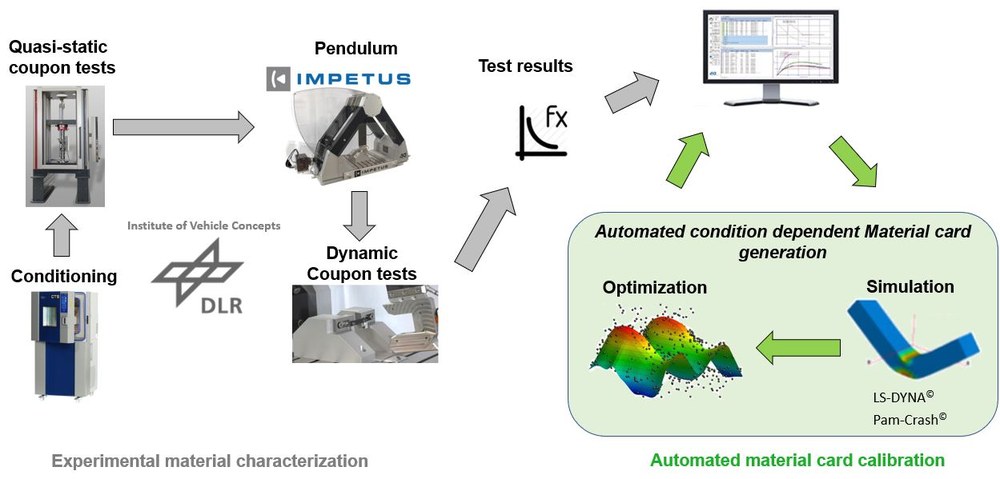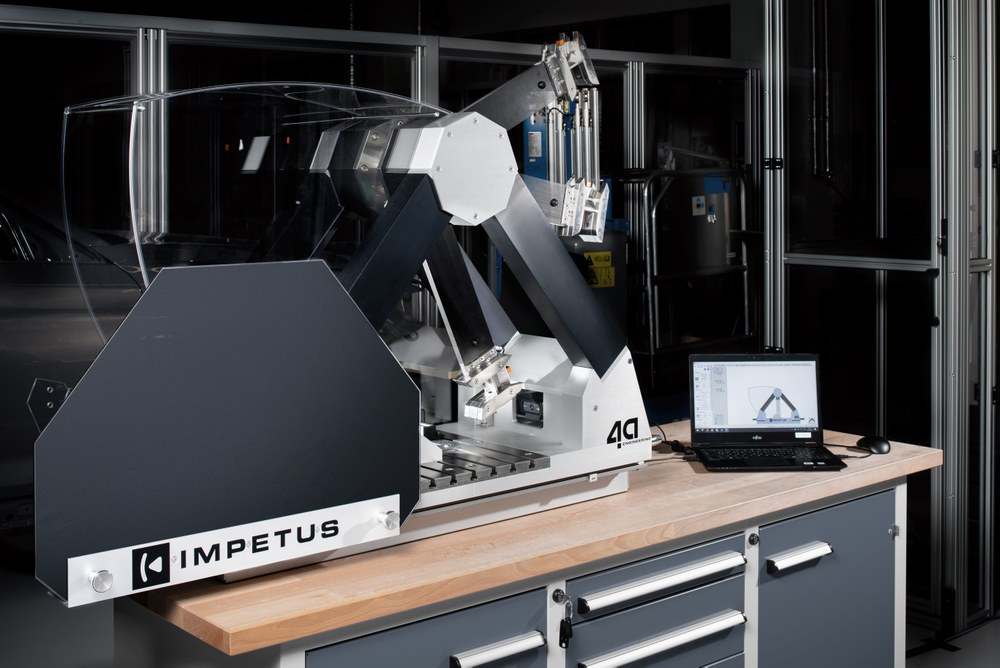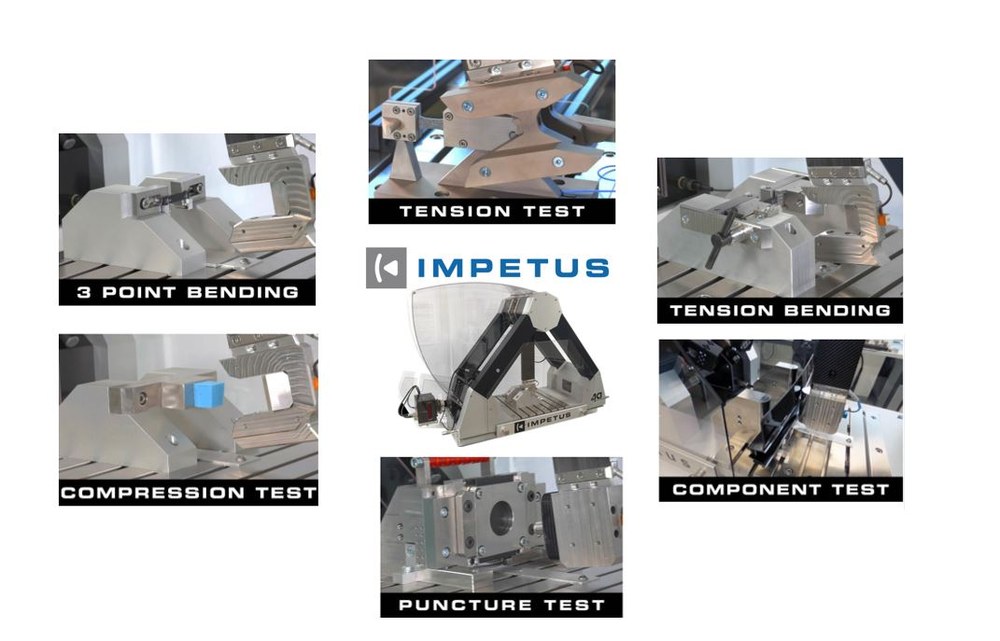The development of material cards for crash applications is a very challenging task due to the complexity of modeling the highly non-linear material behaviour. A closed process flow between material characterization tests and an automated procedure for material card optimization was developed and combined for an automated material card derivation process. The material characterization can consist of quasi-static and dynamic coupon tests, in which the failure of conditioned material samples can be determined. This allows temperature-, moisture- and strain rate-dependent material descriptions to be derived.

The IMPETUS® pendulum can be used to conduct dynamic tests and thus velocity-dependent specimen loads. The pendulum enables the mechanical characterization of dynamically loaded material samples or small components under defined uniaxial or biaxial stress conditions. The experimental data can be directly linked to the VALIMAT® optimization environment, which provides an interface between the test data, the explicit simulation environment and a metamodel-based optimizer. By combining predefined coupon tests and defined interfaces to explicit solvers, numerical material descriptions can be automatically generated and directly validated with this process flow.
Process overview of automated material card derivation
- Available test setups: 3-point bending, tensioned bending, dynamic tensile, puncture, compression and component tests
- Applicable for plastics, fiber-reinforced plastics, foams & aluminum alloys [in limited quantities steel]
- Measurement of different strain rates by adjusting the support distance and the connection boundary conditions
- Impact velocities between 0.5 - 4.4 m/s, a maximum impact mass of 5.5 kg [impact energies up to 50 J]
- Measurements can be carried out with Digital Image Correlation [DIC]Extension by user-specific material models and sample geometries possible
- Automated material map derivation for different FE solvers (LS-DYNA©, Pam-Crash©) possible


